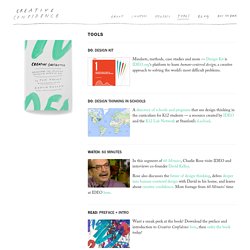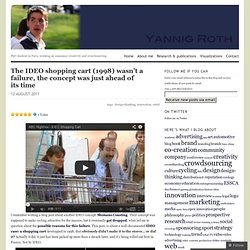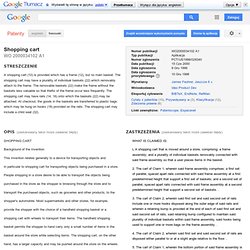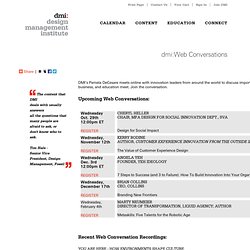

Creative Confidence by Tom & David Kelley. Mindsets, methods, case studies and more — Design Kit is IDEO.org‘s platform to learn human-centered design, a creative approach to solving the world’s most difficult problems.

A directory of schools and programs that use design thinking in the curriculum for K12 students — a resource created by IDEO and the K12 Lab Network at Stanford’s d.school. In this segment of 60 Minutes, Charlie Rose visits IDEO and interviews co-founder David Kelley. Rose also discusses the future of design thinking, delves deeper into human-centered design with David in his home, and learns about creative confidence. More footage from 60 Minutes’ time at IDEO here. Want a sneak peek at the book? A creative process that helps you design meaningful solutions in the classroom, at your school, and in your community. “A 90-minute video-led cruise through our methodology.” “Most people are born creative. Is your school or workplace divided into “creatives” versus practical people?
Design Kit. The IDEO shopping cart (1998) wasn’t a failure, the concept was just ahead of its time. I remember writing a blog post about another IDEO concept: Shimano Coasting.

Their concept was supposed to make cycling attractive for the masses, but it eventually got dropped, what led my to question about the possible reasons for this failure. This post, is about a well-documented IDEO case: a shopping cart developped in 1998, that obviously didn’t make it to the stores… or did it? Actually it did, it just has been picked up more than a decade later, and it’s being rolled out here in France. Not by IDEO. If you watched the video, you easily understand what their concept was all about: safety for kids, modularity while shopping, easy handling and facilitated check-out. But why didn’t anyone use them on the large scale? Source: VisionaryMarketing.wordpress.com And indeed, similar shopping carts are currently being rolled out in some French supermarkets.
Some things never change! Like this: Like Loading... Patent WO2000034102A1 - Shopping cart - Google Patents. Background of the Invention This invention relates generally to a device for transporting objects and in particular to shopping cart for transporting objects being purchased in a store.

People shopping in a store desire to be able to transport the objects being purchased in the store as the shopper is browsing through the store and to transport the purchased objects, such as groceries and other products, to the shopper's automobile. Provide the shopper with the choice of a handheld shopping basket or a shopping cart with wheels to transport their items.
Basket permits the shopper to hand carry only a small number of items in the basket around the store while selecting items. Hand, has a larger capacity and may be pushed around the store on the wheels. Both the handheld basket and the shopping cart may also be taken out of the store to the shopper's automobile. Conventional shopping carts is that people may not return them to the store so may be stolen. The IDEO shopping cart (1998) wasn’t a failure, the concept was just ahead of its time. IDEO Shopping Cart Project. RAPIDBI - Training, Leadership & Change. Deep-Dive™ is the name of a technique used to rapidly immerse a group or team into a situation for problem solving or idea creation.

This approach is often used for brainstorming product or process development. History Originally developed by the IDEO group (a learning design company) for rapid product development, the Deep-Dive technique is now widely and increasingly used for innovation not only in product development, but process improvement and customer service strategies. The method used by IDEO was documented by Andy Boynton and Bill Fischer (of International Institute of Management Development (IMD) business school), who latterly further enhanced the process and sold the rights to Deloitte Consulting in 2006.
This approach to innovation often focuses on four distinct areas: Process, Organisation, Culture, and Leadership. Often Deep-Dive sessions are run off-site, this has the disadvantage of helping to ‘educate’ the participants that they can only think ‘off-site’. Process. Web Conversations - Design Management Institute. DMI's Pamela DeCesare meets online with innovation leaders from around the world to discuss important issues where design, business, and education meet.

Join the conversation. Upcoming Web Conversations: Recent Web Conversation Recordings: you are here - how environments shape culture Guest: Mickey McManus, MAYA Design, Moderators: Sunand Bhattacharya, Autodesk; and Pamela DeCesare, Brand Muse Download pdf of the presentation here. The strategy behind GE's decision to launch FirstBuild, it's co-creation lab & microfactory.